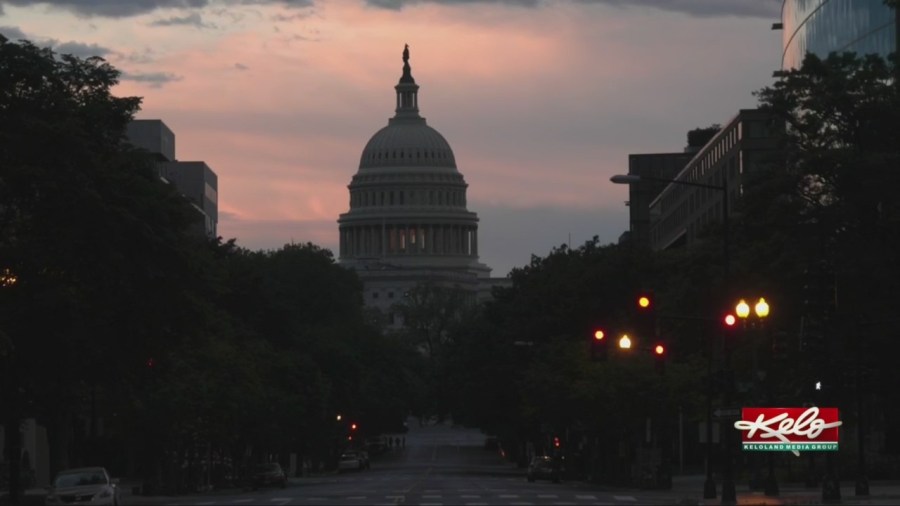SIOUX FALLS, S.D. (KELO/AP) — For millions of American voters, the economy is an important issue as they mark their ballots, and among the economic issues receiving attention in 2024’s presidential election are tariffs.
A tariff is a tax on an import. If a foreign good has a tariff attached to it, then an American business buying this good will have to pay that tax, and the U.S. Treasury takes in this money. However, the American customer is an important part of the equation because a tariff means a higher cost for the importing business. This becomes a higher price for the customer.
“When you impose taxes on imports, typically the price of the goodwill reflects the tax in a way that means the buyer of the import is going to, in effect, be paying the tariff,” South Dakota State University economist Joe Santos said.
Santos highlights certain goods when making this point.
“More than likely, particularly these highly finished goods, things like electric cars or of the case may be, that when this reaches the shores of the importer, it’s likely the buyer of the good who’s going to, in effect, pay the tariff,” Santos said.
Augustana University economist George Loginov says a local farmer could feel the weight of a tariff from more than one direction.
“A farmer in South Dakota where you first get an increase in costs because of the tariffs and because of the stuff that you’re bringing into the country to produce soy or corn, and then you might see a reduction in earnings as well because other countries will retaliate by potentially imposing tariffs on your exports,” Loginov said.
Loginov points out that American exports are, of course, another country’s imports.
“Typically, if one country raises a tariff, there’s going to be retaliation,” Loginov said. “So, for example, in 2018 the Trump administration introduced tariffs on foreign washer machines, and China was the main source of washers for the United States. And so, as a retaliation measure, the Chinese introduced a tariff on soybeans imported from the United States to China.”
“I think it’s important to realize, for example, right now there are tariffs in place that the current administration has maintained that the prior administration imposed,” Santos said.
Former president and current Republican presidential candidate Donald Trump has floated a 60% tariff for Chinese goods in addition to a 10% or 20% tariff on all other American imports. And for its part, the current Biden administration featuring Democratic presidential candidate Kamala Harris put a tariff of 100% on electric vehicles from China.
“Economists are pretty evenhanded about this in the sense that we think that tariffs are really a last resort unless what you’re trying to do is very intentionally disrupt trade,” Santos said. “And there may be an argument for that.”
A tariff can be seen as protecting a domestic industry.
“If you do have an industry domestically that is producing a good that can also be imported, the idea is that you’d be protecting that industry domestically by imposing that tariff on the imported good,” Santos said.
“You can kind of substitute imported goods with domestic production,” Loginov said. “And so that would benefit the companies that were losing competition prior to that.”
“As a state that does export lots of goods, you probably don’t want to be on the receiving end of a tariff, right, from some other country,” Santos said. “And you might reason you will be on the receiving end of a tariff if your country is imposing tariffs.”
While it’s uncertain how the 2024 presidential election will shake out, it’s clear that tariffs don’t happen in a vacuum. International economics means the world is interconnected.
“That government who has its goods taxed may retaliate in a way that does affect domestic buyers, say, in this state,” Santos said.


